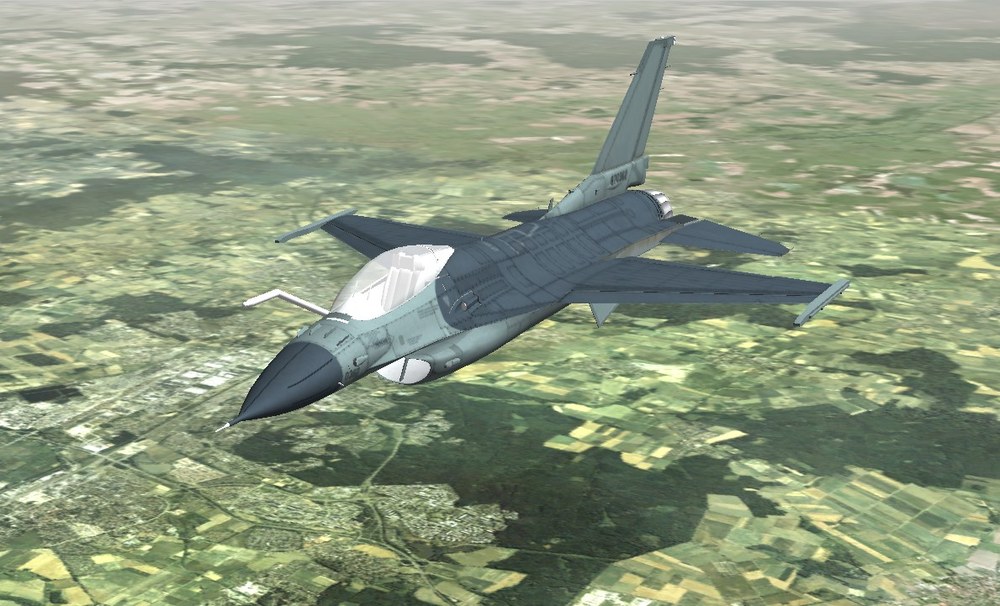Flight Mechanics

The Flight Mechanics group is primarily concerned with the characteristics, modelling and control of military aircraft. This includes the consideration of unaugmented aircraft, as well as the dynamic behaviour without the involvement of the pilot. These characteristics are also referred to as flying qualities. As soon as the human pilot is included as an element of the control loop the resulting properties are specified as handling qualities. The highly complex control systems in modern fighter aircraft are a core-competence of the group. The area of responsibility is rounded off by development of flight mechanical models of modern fighter aircraft, as well as expertise in the field of air data systems.
Military Research
Multiple fighter aircraft models of different configurations and various characteristics and levels of detail are available to the group. Augmented by specifically developed flight control systems, these models provide the foundation for the group’s main research areas.
The MARS-FIT (Military Air Vehicle Simulator - Fast Integration Testbed) fighter aircraft simulator, available in the Department for Military Aircraft, offers an ideal platform for these flight mechanics models to conduct application-oriented research. The existing simulator infrastructure affords the opportunity to implement and test concepts quickly and efficiently.
The Department for Military Aircraft is situated on the premises of the Bundeswehr Technical Centre for Aircraft and Aeronautical Equipment (WTD61), which is responsible within the Bundeswehr for the qualification and technical evaluation of all newly developed aircraft and modifications to systems already in service. This proximity to the Bundeswehr enables close contact with test pilots, who are regularly involved in simulator tests as part of military research.
As part of this collaboration with the Bundeswehr, the simulator and the underlying simulation models have been validated through comprehensive test campaigns, allowing the results to be translated into real-world applications.
Another area of research focus for the flight mechanics group is air-to-air refuelling. In addition to the detailed modelling of the entire manoeuvre, the primary focus is on supporting pilots during this demanding task—achieved by designing flight controllers as fully or partially automated systems. These concepts not only assist the pilot by taking over certain tasks but also reduce workload through customised control modes. Finally, simulator test campaigns with Bundeswehr pilots evaluate both the suitability of the control concepts and their implementation and effects on the pilots. Incorporating realistic sensor models as input signals for the implemented controllers further enhances transferability to actual air-to-air refuelling manoeuvres.
Based on their highly complex flight control systems, modern fighter aircraft exhibit maximum agility and manoeuvrability within wide operational envelopes. A fundamental prerequisite for this is the precise and reliable measurement of air data, which encompasses the direction of the airflow vector as well as static and total temperature and pressure measurements. Measuring these parameters, especially at high angles of attack, high altitudes, and during dynamic manoeuvres, presents significant challenges. Furthermore, future fighter aircraft must reconcile their air data systems with a reduced radar cross-section. The flight mechanics group addresses these measurement systems, their modelling, and calibration.
Analysis and Evaluation
In addition to its military research activities, the group supports the Bundeswehr in areas of certification and qualification across various current military aviation projects. This includes providing expertise to the Federal Office of Bundeswehr Equipment, Information Technology and In-Service Support (BAAINBw) and the German Military Aviation Authority (LufABw) through its independent scientific studies. The group plays a critical role in ensuring that the armed forces are equipped with high-performance, state-of-the-art equipment throughout all lifecycle stages of an aircraft—from requirements establishment, design evaluation, to operation and potential further developments. In this context, knowledge gained from military research is applied to the practical aspects of current projects to assist the Bundeswehr.
Moreover, the group is actively engaged in international committees addressing specialist questions in the field of flight mechanics. Support for the Bundeswehr also includes participation in the planning, execution, and evaluation of flight tests, whereby the experience gleaned from simulator tests conducted as part of research projects can be translated into practice.
Overall, your text demonstrates a strong command of English and aligns well with British English conventions, with only minor modifications suggested for optimal clarity and presentation.
